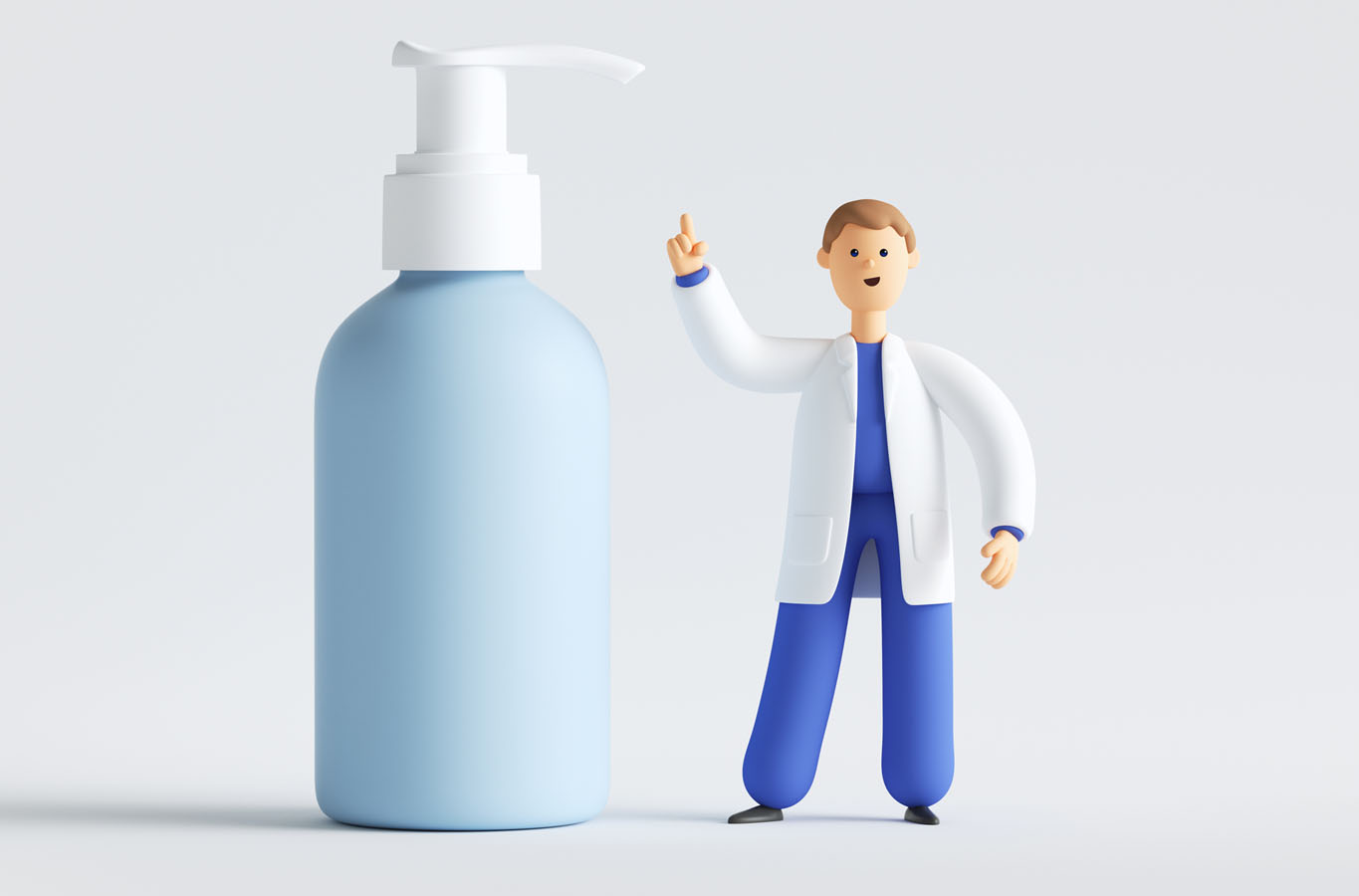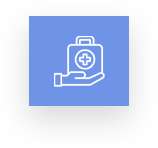
Influenza A virus Panel (H1 and H3) Flu Symptoms & Diagnosis
Influenza A viruses are divided into subtypes based on two proteins on the surface of the virus: hemagglutinin (H) and neuraminidase (N). There are 18 different hemagglutinin subtypes and 11 different neuraminidase subtypes (H1 through H18 and N1 through N11, respectively). While more than 130 influenza A subtype combinations have been identified in nature, primarily from wild birds, there are potentially many more influenza A subtype combinations given the propensity for virus “reassortment.” Reassortment is a process by which influenza viruses swap gene segments. Reassortment can occur when two influenza viruses infect a host at the same time and swap genetic information. Current subtypes of influenza A viruses that routinely circulate in people include A(H1N1) and A(H3N2). Influenza A subtypes can be further broken down into different genetic “clades” and “sub-clades.” See the “Influenza Viruses” graphic below for a visual depiction of these classifications. Influenza (also known as “flu”) is a contagious respiratory illness caused by influenza viruses. It can cause mild to severe illness, and at times can lead to death. This page provides resources about flu symptoms, complications, and diagnosis.
- Fever*/feeling feverish or chills
- Cough
- Sore throat
- Runny or stuffy nose
- Muscle or body aches
- Headaches
- Fatigue (tiredness)
- Some people may have vomiting and diarrhea, though this is more common in children than adults.
People at Higher Risk of Flu Complications
Following is a list of all the health and age factors that are known to increase a person’s risk of getting serious flu complications: Adults 65 years and older Children younger than 2 years old1 Asthma Neurologic and neurodevelopment conditions Blood disorders (such as sickle cell disease) Chronic lung disease (such as chronic obstructive pulmonary disease [COPD] and cystic fibrosis) Endocrine disorders (such as diabetes mellitus) Heart disease (such as congenital heart disease, congestive heart failure and coronary artery disease) Kidney diseases Liver disorders Metabolic disorders (such as inherited metabolic disorders and mitochondrial disorders) People with a body mass index (BMI) of 40 kg/m2 or higher People younger than 19 years old on long-term aspirin- or salicylate-containing medications. People with a weakened immune system due to disease (such as people with HIV or AIDS, or some cancers such as leukemia) or medications (such as those receiving chemotherapy or radiation treatment for cancer, or persons with chronic conditions requiring chronic corticosteroids or other drugs that suppress the immune system) People who have had a stroke Other people at higher risk from flu: Pregnant people and people up to 2 weeks after the end of pregnancy People who live in nursing homes and other long-term care facilities People from certain racial and ethnic minority groups are at increased risk for hospitalization with flu, including non-Hispanic Black persons, Hispanic or Latino persons, and American Indian or Alaska Native persons 1 Although all children younger than 5 years old are considered at higher risk of serious flu complications, the highest risk is for those younger than 2 years old, with the highest hospitalization and death rates among infants younger than 6 months old.
Flu Treatment
If you get sick with flu, influenza antiviral drugs may be a treatment option. Antiviral drugs work best when started early, ideally no later than two days after your flu symptoms begin. Check with your doctor promptly if you are at higher risk of serious flu complications and you get flu symptoms. People at higher risk of flu complications include young children, adults 65 years of age and older, pregnant people, and people with certain medical conditions such as asthma, diabetes and heart disease. Treatment of flu with influenza antiviral medications works best when started within two days after flu symptoms begin and can lessen symptoms and shorten the time you are sick by about a day. Starting antiviral treatment shortly after symptoms begin also can help reduce some flu complications.
Prevent Seasonal Flu
The best way to reduce your risk from seasonal flu and its potentially serious complications is to get a flu vaccine every year. This page has resources to help answer your questions about flu vaccines. If you are a health professional, please see Seasonal Influenza Vaccination Resources for Health Professionals.
How Flu Spreads
Most experts believe that flu viruses spread mainly by tiny droplets made when people with flu cough, sneeze, or talk. These droplets can land in the mouths or noses of people who are nearby. Less often, a person might get flu by touching a surface or object that has flu virus on it and then touching their own mouth, nose or possibly their eyes.
How Many People Get Sick with Flu Every Year?
A 2018 CDC study published in Clinical Infectious Diseases looked at the percentage of the U.S. population who got sick with flu using two different methods and compared the findings. Both methods had similar findings, which suggested that on average, about 8 percent of the U.S. population gets sick from flu each season, with a range of between 3 percent and 11 percent, depending on the season.
Who is most likely to get sick with flu?
The same CID study found that children are most likely to get sick from flu and that people 65 and older are least likely to get sick from flu. Median incidence values (or attack rate) by age group were 9.3% for children 0-17 years, 8.8% for adults 18-64 years, and 3.9% for adults 65 years and older. This means that children younger than 18 are more than twice as likely to develop a symptomatic influenza virus infection than adults 65 and older.
How is seasonal incidence of flu estimated?
Influenza virus infection is very common, and the number of people infected each season can only be estimated because not everyone will seek medical care or get tested for flu. Statistical estimations are based on CDC-measured flu hospitalization rates that are adjusted to estimate the total number of influenza virus infections in the United States for a given flu season. The estimates for the number of influenza virus infections are then divided by the census population to estimate how common influenza virus infections are in the population (called seasonal incidence or attack rate).
Does seasonal incidence of flu change based on the severity of flu season?
Yes. The proportion of people who get sick with flu varies. A paper published in CID found that between 3 percent and 11 percent of the U.S. population gets infected and develops flu symptoms each year. The 3 percent estimate is from the 2011-2012 season, which was an H1N1-predominant season classified as being of low severity. The estimated incidence of flu illness during two seasons was around 11 percent; 2012-2013 was an H3N2-predominant season classified as being of moderate severity, while 2014-2015 was an H3N2 predominant season classified as being of high severity.
Period of Contagiousness
You may be able to spread flu to someone else before you know you are sick, as well as when you are sick with symptoms. People with flu are most contagious during the first 3 days of their illness. Some otherwise healthy adults may be able to infect others beginning one day before symptoms develop and up to five to seven days after becoming sick. Some people, including young children and people with weakened immune systems, may be contagious for longer periods of time. Onset of Symptoms The time from when a person is exposed and infected with influenza virus to when symptoms begin is about two days, but can range from about one to four days.
Complications of Flu
Most people who get flu will recover in a few days to less than two weeks, but some people will develop complications (such as pneumonia) as a result of flu, some of which can be life-threatening and result in death. Sinus and ear infections are examples of moderate complications from flu, while pneumonia is a serious flu complication that can result from either flu virus infection alone or from co-infection of flu virus and bacteria. Other possible serious complications triggered by flu can include inflammation of the heart (myocarditis), brain (encephalitis) or muscle tissues (myositis, rhabdomyolysis), and multi-organ failure (for example, respiratory and kidney failure). Flu virus infection of the respiratory tract can trigger an extreme inflammatory response in the body and can lead to sepsis, the body’s life-threatening response to infection. Flu also can make chronic medical problems worse. For example, people with asthma may experience asthma attacks while they have flu, and people with chronic heart disease may experience a worsening of this condition triggered by flu.
Preventing Seasonal Flu
The first and most important step in preventing flu is to get a flu vaccine each year. Flu vaccine has been shown to reduce flu related illnesses and the risk of serious flu complications that can result in hospitalization or even death. CDC also recommends everyday preventive actions (like staying away from people who are sick (distancing), covering coughs and sneezes, frequent handwashing, and taking steps for cleaner air) to help slow the spread of germs that cause respiratory (nose, throat, and lungs) illnesses like flu. More information is available about core and additional prevention strategies.
Treating Flu
There are flu antiviral drugs that can be used to treat flu illness. More information is available: “Seasonal Influenza, More Information.”
What are the benefits of antiviral drugs?
Treatment of flu with influenza antiviral medications works best when started within 1-2 days after flu symptoms begin and can lessen symptoms and shorten the time you are sick by about a day. Starting antiviral treatment shortly after symptoms begin also can help reduce some flu complications. For adults hospitalized with flu, some studies have reported that early antiviral treatment can reduce their risk of death.
When should antiviral drugs be taken for treatment?
Antiviral treatment provides the greatest benefit when started soon after flu illness begins. Studies show that flu antiviral drugs work best for treatment when they are started within two days of getting sick. However, starting them later can still be beneficial, especially if the sick person is at higher risk of serious flu complications or is in the hospital with more severe illness. Follow instructions for taking these drugs. Follow your doctor’s instructions and the dose, frequency, and duration listed on the label instructions for taking these drugs.
What antiviral drugs are recommended this flu season?
There are four FDA-approved antiviral drugs recommended by CDC to treat flu this season. oseltamivir phosphate (available as a generic version or under the trade name Tamiflu®), zanamivir (trade name Relenza®), peramivir (trade name Rapivab®), and baloxavir marboxil (trade name Xofluza®). Generic oseltamivir and Tamiflu® are available as a pill or liquid suspension and are FDA approved for early treatment of flu in people 14 days and older. Zanamivir is a powdered medication that is inhaled and approved for early treatment of flu in people 7 years and older. (Note: Zanamivir (trade name Relenza®) is administered using an inhaler device and is not recommended for people with breathing problems like asthma or COPD.) Oseltamivir and zanamivir are given twice a day for five days. Peramivir is given once intravenously by a health care provider and is approved for early treatment of flu in people 6 months and older. Baloxavir is a pill given as a single dose by mouth and is approved for early treatment of flu in children aged 5 years to less than 12 years who do not have any chronic medical conditions, and for all people aged 12 years and older. (Note: Baloxavir (trade name Xofluza®) is not recommended for treatment of flu in pregnant people, lactating people, or in outpatients with complicated or progressive illness because there is no information about use of baloxavir in these patients. Baloxavir is also not recommended for treatment of flu in hospitalized patients due to limited data.)







